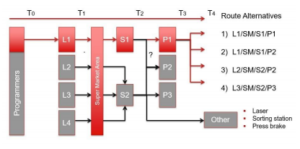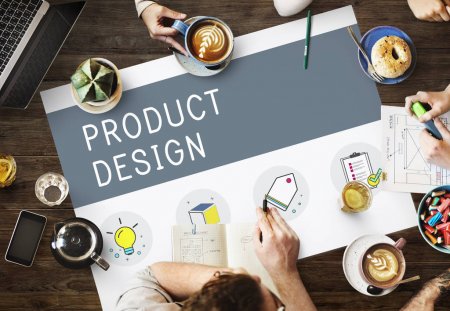
Quick Response Manufacturing – The need of the hour
- admin
- 17th Aug 2020

In today’s manufacturing scenario, Cost and Speed to Market are the “Vital Two” criterion that decide the
success of a company. In the prevailing situations Manufacturing probably is one of the most important
paradigms for the World economies. With so much of importance, the modern manufacturing is short of
proper theoretical concepts and frameworks to adapt to in a quickly changing market. Lean / JIT, though
they are backbones of mass manufacturing industry, are not suitable enough for high variety – Low
volume environment. In order to remain competitive there has been a need to develop new
manufacturing concepts with belonging methods, systems and tools for modern high-tech and customized
manufacturing systems.
Let’s quickly summarize the five kinds of manufacturing systems:
1) Job shop – Major characteristics are Flexibility / Variety / Highly skilled operators. The price for the
characteristics are Long WIP & Delayed response to Market.
2) Flow Shop system – Successive units of output undergo the same sequence of operations. It requires
larger volume & Heavy investment.
3) Project Shop is directed towards creating a product or Service which is very large (immobile), here
the people, materials, machines are moved to Project site for assembly and processing.
4) Continuous process System, in which project generally gases, liquids or slurries – Flow through a
series of directly connected processes or operations.
5) Cellular Manufacturing – This system groups processes, people and machines to manufacture a
specific Family of parts
While looking at the Market conditions and manufacturing processes, we infer as below., The Low volume,
High variety and rapid design transitions which were once perceived as the characteristics of Fashion
industry has now percolated to almost all the products we use daily. More than ever, we are in need of a
Conceptual framework / philosophy and Technology that accommodates the continuous changing needs
of market and quickly help a company reciprocate to the change. Here comes the need for QRM.
Quick Response Manufacturing (QRM):
QRM has a singular focus on reducing lead time, “lead time” can mean different things to different people.
We can’t reduce something if we can’t even agree how to measure it. Traditional notions of lead time do
not adequately capture waste in the processes of how that lead time is actually achieved. Indeed, most
definitions of lead time are along the lines of the time from when an order is booked by a customer until
the order is received by that customer.
Lead time in QRM is measured by a parameter called MCT – Manufacturing Critical path Time, which is
“the amount of calendar time from when a customer creates an order, which flows through the critical
path, until the first piece of that order is delivered to the customer”.
Unlike Lean/JIT focusses much on Micro wastes such as Transportation, over processing, over inventory
and Delay which is a must for Repetitive production. However QRM focuses only on the Parameter of
“Lead Time” which is expectation of customer basically.
QRM – What & Why:
What:
- QRM is a material system for coordinating, monitoring and controlling the flow of the goods on the shop floor.
- Coordination is achieved through organizational flexibility, material planning and release approach, and prevention of congestion.
Why:
- Companies that manufacture large variety of products or offer engineered products cannot achieve lead time reduction using the traditional scheduling of production, based on MRP planning.
- QRM enables lead time reduction for companies that operate in markets with unpredictable and frequently changing demand, and/or focus on customization.
Bala
[email protected]
